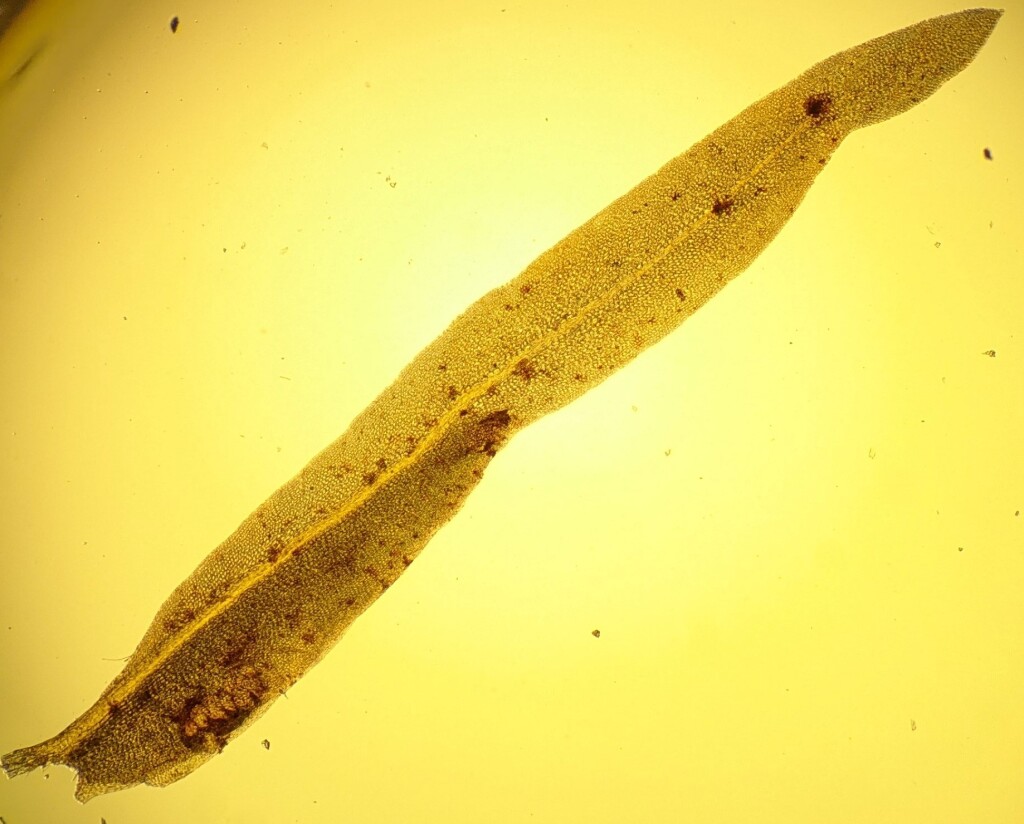Fissidens berteroi
(Mont.) Müll.Hal.Asexual propagules absent. Tufts or mats in water attached to rocks or tree roots or free floating, yellowish green to dark green. Stems to 12 cm or more long, much-branched, brown, central strand absent, with rhizoids at base, in leaf axils or rarely near apex. Leaves lanceolate to linear-lanceolate, twisted and contorted when dry, 5–9 mm long, 0.5–0.9 mm wide, flat; costa indistinct, ending 15–40 cells below apex; apex acute. Dorsal laminae with entire margins or with occasional serrations near apex, without a border; cells irregularly hexagonal, 13–24 (–43) μm long, (7–) 11–15 (–25) μm wide, smooth. Vaginant laminae up to 2/5–1/2 leaf length, almost closed, without a border or a few rows of marginal cells narrower and longer in the lower third forming a weak border. Autoicous. Seta 0.9–1.4 mm long, green to yellow. Capsule ovoid, horizontal to vertical, straight; theca 0.5–0.8 mm long. Calyptra smooth, cucullate. Operculum bluntly apiculate from conic base, c. 1/3 length of urn. Peristome teeth unequally bifid.
GleP, VVP, VRiv, GipP, WaP, HSF, HNF, Strz. Recorded from waterways throughout Victoria (e.g. Murray River, Goulburn River, Maribyrnong River and Darlots Creek near Portland). Also SA, QLD, NSW and Lord Howe Is. New Zealand and South America.
 Spinning
Spinning

